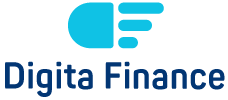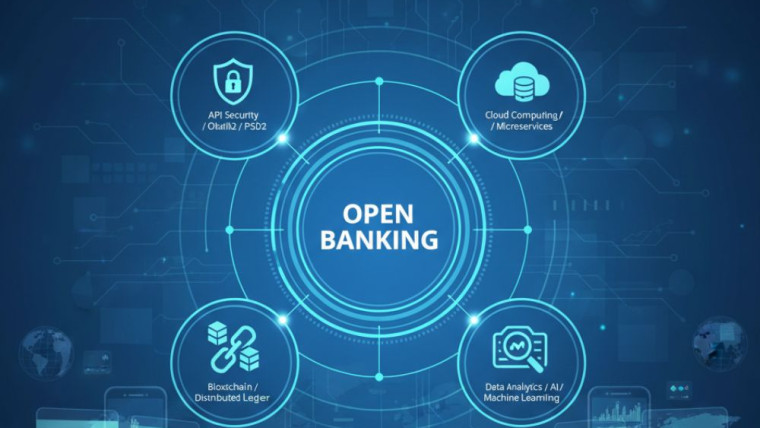Deciding to plunge into the fintech industry can be quite an experience. After all, you’re embracing a blend of the most advanced technologies and the most innovative financial services. Yet however compelling your idea might be in its essentials, it’s often a matter of money that determines whether it will ever take off. This is where you need to impress investors with a winning pitch.
This guide is here to help you navigate the ins and outs of getting funding for your fintech idea. It will take you from learning who your audience is (the people providing the money in this case) right on through to figuring out what value proposition you want to present. By the end, you’ll have everything laid out in front of you—a clear path to making a pitch that both catches the eye and gets the bucks in.
Understand Your Audience
Before you go into a meeting, get to know who’s sitting across from you. Investors are not all the same. There may be some who are well aware of fintech, while others could be any old venture capital (VC) company or individual angel investing for new opportunities.
Study Your Investors Carefully
-
Know their portfolio: Take a look at the fintech companies they have put money into. This will give you an idea of their interests and what sort of ideas could be more forthcoming from them.
-
Judge their expertise: Have they been seasoned tech investors in the past, or is fintech something new for them? Tailor the story behind your idea to how much they know about the industry.
-
Understand their business targets: Some investors want fast growth, others are more interested in long-term profits or in finding a way to provide banking services for people out in the cold financially.
When you align your pitch with the requirements and expectations of your audience, it is more likely to be successful.

Identify the Problem You Are Solving
For no investor will back a solution seeking itself a problem. The most effective fintech pitches clearly state one very particular problem which is here and now, and your product has a response to.
Orientation of Pain Entities
At this point, point out the inefficiencies of the financial system today, the costly manual processes that have to be done by banks, or gaps in user experience.
Use data and stories to put flesh on the bones of your effect. For example:
“60% of small businesses report being turned down for loans because credit scoring is flawed. Our platform fixes this.”
Follow Keep in Mind
To say that there is a problem is not enough for investors; they have to see the situation can warrant investment. Communicate both the extent of the problem and why it matters in today’s market.
Pain Points Examples and Solutions
-
Pain Point: Conventional remittance services charge high fees (average as a percentage of amount sent 7.4% globally).
-
Solution/Your Product: Using blockchain to effect money transfers at a fraction of the cost, giving millions of overseas workers a saving.
Noticing a Bright Aspect
After you have characterized the problem, your next step is to show how much better your fintech idea solves it than what’s available on the market today.
Show Off What’s Unique About Your Idea
Your paper must emphasize why your product matters. Look for the unique technology, processes or deliverables that distinguish you from a pack of competitors. Examples include:
-
Faster processes (e.g., digital payments instant as opposed to three business days in traditional transfer mode).
-
Cost effectiveness (e.g., through AI automation lowering compliance expenses).
-
Innovation (e.g., the lack of collateral banks turn a blind eye towards in credit scoring-using atramental data sources for scores).
Show Your Impact Adams Demonstration
Quantify prospective outcomes wherever you can:
“Our platform lowers processing fees by 40%.”
“95% of users raise their scores in six months.”
These tangible markers make your value proposition all the more appealing.
Establish a Business Model That Can Grow
Investors aren’t just funding an idea; they’re backing a business model with room for growth. They need to see both two things clearly.
Lines of Revenue
Explain how your product makes money. Typical fintech revenue models include:
-
Subscription-Based Models: Recurring SaaS Fees for Financial Management Platforms.
-
Transaction Fees: Percentage-Based Fees on Payments Processed through Your Software.
-
Freemium Models: Premium Features for Paid Users.
Growth Strategy
Customer acquisition: Investors want to know how you will grow your user base cost effectively:
-
Identify the customer segments you will target first.
-
The channels you will use, such as partnerships with banks, direct to consumer advertising, or B2B outreach.
Prepare a Winning Financial Plan
Figures speak louder than words and this is especially true when seeking fintech investments. Your financial plan should lay out clearly and confidently that you understand the financial dynamics of your business.
Key Metrics
Investors are interested in seeing:
-
Market Size: Prove that your product targets a large, expanding market.
-
Customer lifetime value (CLV) & customer acquisition costs (CAC):
“Our CLV is $1,200 and CAC is $200, for a 6x return.” -
Revenue Projections for the Next 3–5 years.
Unit Economics
Break down your costs and how you make a profit:
-
Cost per user.
-
Gross and net profit margins.
Funding Ask and Use of Funds
Make your funding ask very specific. Use detailed projections to explain exactly how investment will benefit you:
“We’re looking for $2m to ramp up our development team, adding 30,000 new users in 12 months.”
Showcase Your Team’s Expertise
Fintech is inherently intricate — investors need to know that the people behind the idea can steer through its trials.
-
Point out experience relevant to your fintech niche (previous roles in finance, data security or eCommerce).
-
Draw attention to advisors or board members with strong credentials. For example:
“Our advisor previously headed compliance at a Fortune 500 bank.”
Present a Memorable Demo
The product comes alive through live demonstrations. A real example is far more likely to be remembered by investors than a single boring slide presentation.
How to Set the Right Tone
-
Demonstrate that your system can be used by customers with ease.
-
During your walkthrough, emphasize what makes you different.
-
There is without a demo an animated simulation that still gets people thinking.
With Confidence, Address Major Worries
There will be many questions from investors. Proactively preparing answers to these most typical concerns is in your interests:
-
Regulatory Compliance: How will you make sure you comply with requirements in all of the jurisdiction which your product is intended for?
-
Security: Without having to guess at what risks postponement or escape uncontrolled data flows from expositions on this, please can you tell me how does your strategy plan to block these kinds of threats?
-
Market Adoption: What’s the best path to persuade those who are early adopters of your product?
Do It, Improve, Achieve

The pitch’s delivery can easily break or make the deal. Practice your presentation a few times to make sure you can make it confidently and on time.
Tips for Presentation
-
No slide should have more than five bullet points.
-
Put your strongest material up front.
-
Be excited about your idea and it will spread like wildfire. Passion is infectious!
Take the First Step to Success in Fintech
Pitching idea of your new fintech to investors takes not just effort but also skill. If it goes smoothly, then as well as a hefty round amount of capital you are assured long-term advocates who have bought into your dream.
Do you need help fine-tuning your pitch? We’re here to lend our support at every step of your journey. Turn to our team for guidance and tools that could help your fintech vision take flight.








What Is FinTech? A Beginner’s Guide to the Finteching 2025
How Financial Aid Transitioned to Digital and How Long It Has Been That Way
How Open Banking APIs Are Revolutionizing Digital Finance?
Embedded Finance: How Seamless Financial Services Are Integrating into Everyday Apps
Embedded Finance: How Seamless Financial Services Are Integrating into Everyday Apps
AI-Powered Credit Scoring: Revolutionizing Digital Lending in the Digital Finance Era
Harnessing AI in Digital Finance: Revolutionizing Risk Management and Customer Experience
How Open Banking APIs Are Revolutionizing Digital Finance?